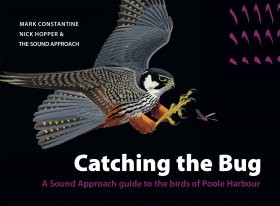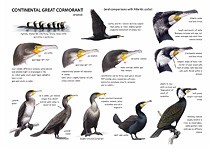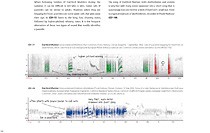Catching the Bug by Mark Constantine, Nick Hopper & The Sound Approach

For many birders considering buying this book, the audio-identification component provides one of the biggest draws. This book may not be as packed with revolutionary taxonomy and ground-breaking discoveries as some of the previous titles, but it certainly still packs a solid sonogram-fuelled punch. In addition to the Dartford Warbler discussion, Siberian Chiffchaff, Cabot's and Sandwich Tern, Cuckoo, and even Cormorant get The Sound Approach treatment. Sound recordings are — unsurprisingly — of the highest quality, and Killian Mullarney's plates and sketches are equally as gorgeous. Gems, like the recording of the Nightingale with church bells, the churring Nightjar, and the singing Woodlarks, are a joy to listen to.
The text provides a very personal account of birding around Poole Harbour; but at the same time, everything written in the text has a distinctly universal feel about it. The finches and thrushes migrating over Poole Harbour could be passing over any visible-migration watchpoint; the attempts to catch up with a local-patch bogey bird are probably familiar to most patch-workers (though, alas, not all of us can have Aquatic Warbler as our local-patch bogey bird); and the tales from the 'birder's pub' likely reflect on all similar gatherings across the country. Despite — or perhaps because of — the everyday nature of some of the topics, the book proved hard to put down; in fact, I read it in just two sittings. I've heard grumbles that the size and shape of The Sound Approach books — effectively A4 landscape — make them hard to hold; I've never found this a problem. The shape and size, in my opinion, work perfectly to showcase the content of the books to the highest standard. The foam buttons on the inside cover, used in previous books to hold the CDs in place, have been replaced with much sturdier plastic studs. The paper is glossy, the book is well bound, the attention to detail is second to none. It is, in many ways, something of a luxury product; a publication to indulge in. Is there anything wrong with this book at all? Well, I noticed a couple of commas had been mistakenly formatted in bold — yes, this book really is so close to perfection that a few punctuation formatting errors are the worst of its sins.I suspect the authors would be satisfied if this book made you want to visit Poole Harbour, but I imagine they'd be even happier if it inspired the reader to get out in the field and discover the same joys in their own local area. Anyone who owns any of the other The Sound Approach books will undoubtedly have this one on their bookshelf — or open on their desk — already; for those who haven't yet caught The Sound Approach bug, there's no better place to start than with this book.
Hardcover, 287pp, colour photographs and illustrations.
The Sound Approach (2012), ISBN 978-9-08109-330-9, RRP: £29.95




